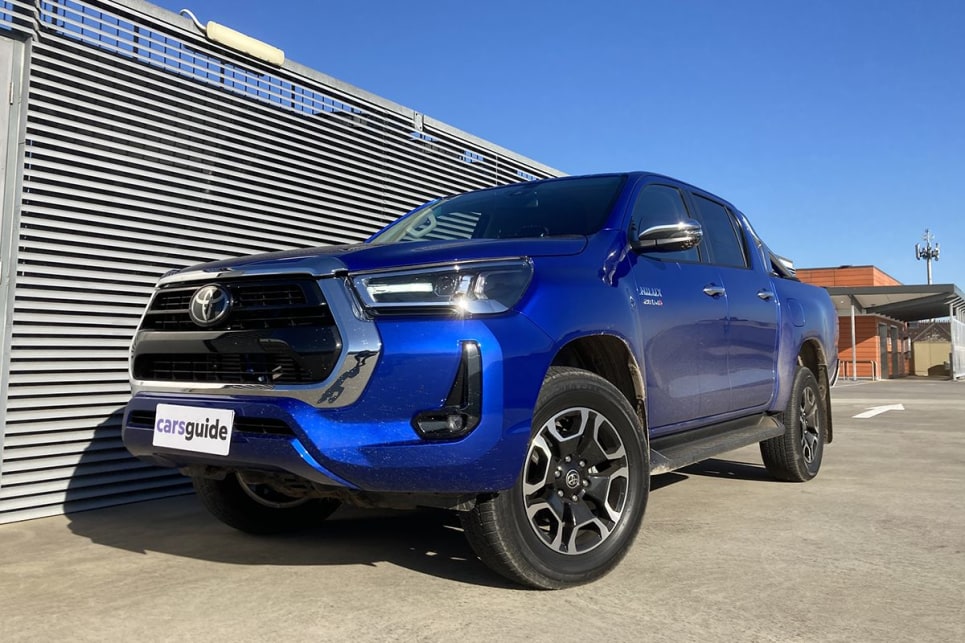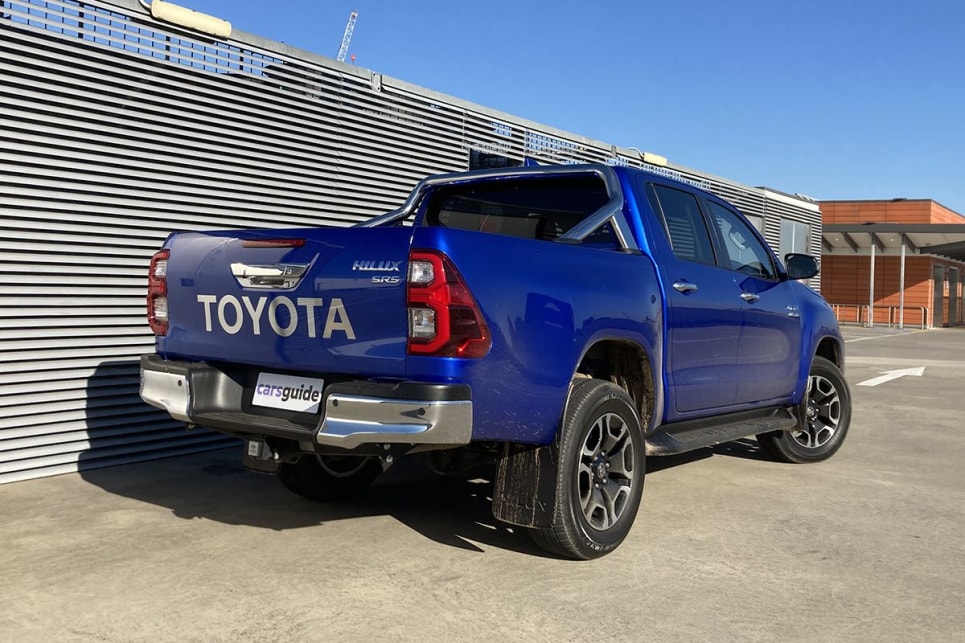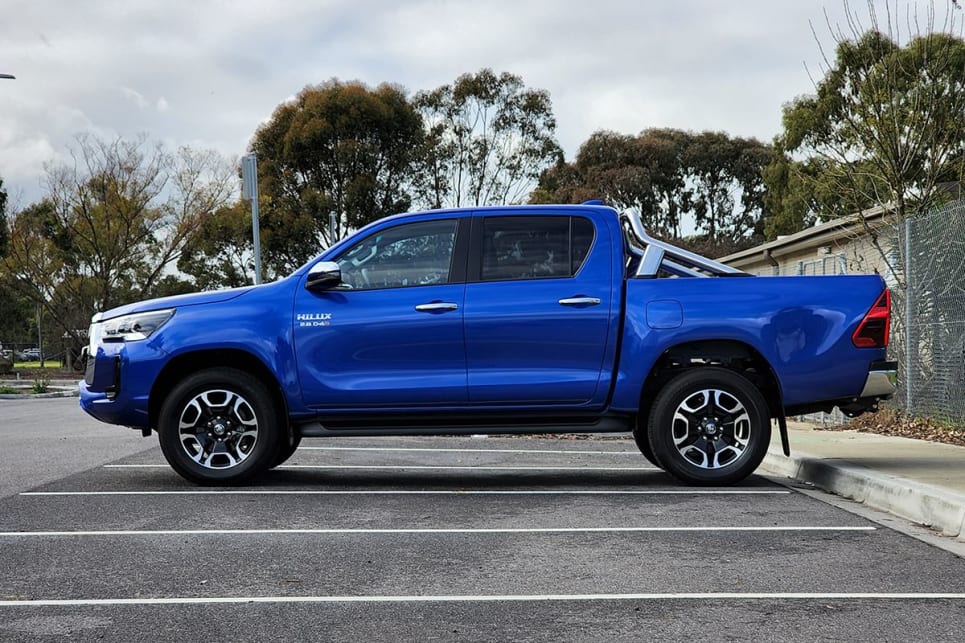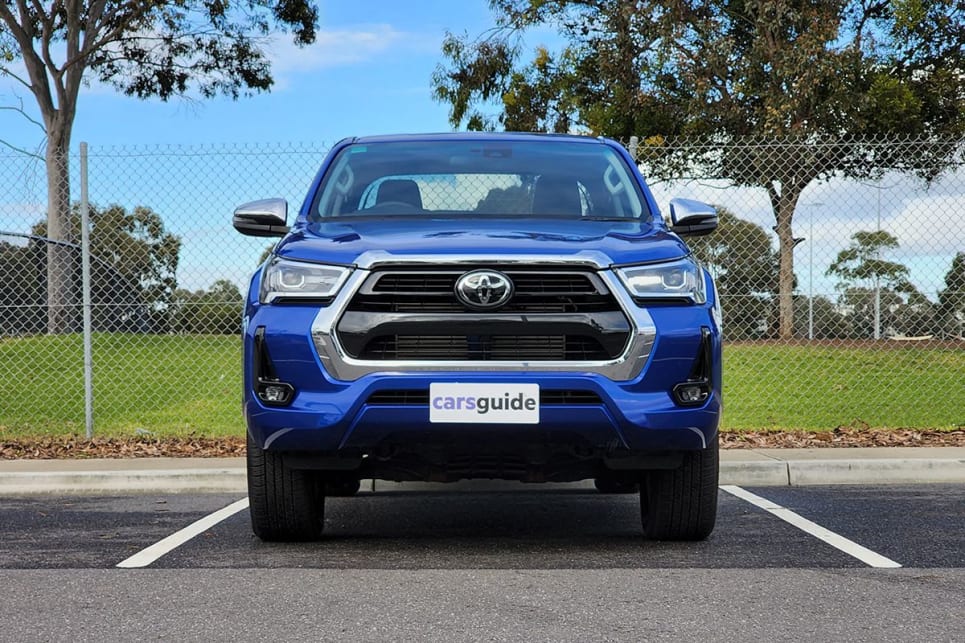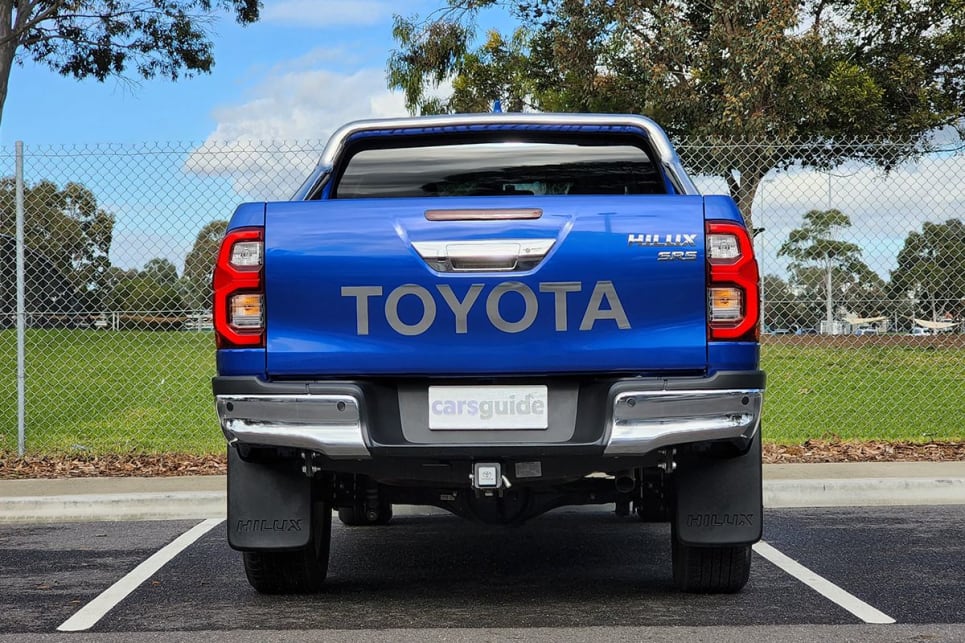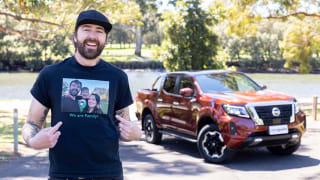On one hand, yes, since buying a HiLux buys into Toyota's renowned reputation for reliability and durability (DPF issues aside), as well as high resale value and a hungry second-hand market. It's long been the safe and sensible choice.
On the other, though, the current HiLux struggles to keep up with the class leaders on a range of fronts, more of which we will explore and expand on further down.
Kicking off from $60,680 (all prices are before on-road costs), the HiLux SR5 Double Cab (dual cab) auto is right in the thick of it, taking on the bestselling (and now auto-only) Ranger XLT (from $61,190), as well as the Mazda BT-50 GT (from $60,390), Isuzu D-Max LS-U (from $61,000), Nissan Navara ST-X (from $58,270) and Mitsubishi Triton GSR (from an alluring $55,590).

Yes, the Toyota is priced on the high side. But it could be better equipped for the money as well.
On the safety front all HiLuxes include seven airbags, autonomous emergency braking (AEB), lane departure alert/assist, speed-sign recognition, adaptive cruise control, trailer-sway control, hill-descent control and in-car SOS, auto collision notification and vehicle-tracking. More on those in the safety section below.
But where are the Toyota's blind-spot monitoring (BSM) and rear cross-traffic alert (RCTA)?
Among the SR5 goodies are keyless entry/push-button start, front/rear parking sensors, auto-levelling LED headlights, fog lights, dual-zone climate control, satellite navigation, DAB+ digital radio, a 220V accessory socket, a tow bar receiver, privacy glass, chromed exterior trim, heated exterior mirrors, a stainless-steel sports bar and 18-inch alloy wheels (with a full-sized spare).

These come on top of the cheaper SR's cooled centre box, side steps, six-speaker audio, and rear differential lock, as well as the base Workmate grade's auto on/off headlights, reverse camera, eight-inch touchscreen display, Apple CarPlay/Android Auto connectivity, Bluetooth telephony and audio streaming, voice-activated assistant, USB port, power windows and all-weather floor mats.
Our SR5 included the Premium pack, which costs $2500 extra, pushing the price up to a heady $63,180. It adds leather trim, heated front seats (powered on the driver's side) and height-adjustable front passenger seat with lumbar support.
However, this also means it's only about $500 short of the Ranger Sport from $63,690 and more than the Navara PRO-4X from $61,230, and both are more-highly specified vehicles.

To help address our value concerns, by the end of 2022, the SR5 will gain BSM, RCTA, a panoramic view monitor, an anti-theft immobiliser and door-mirror puddle lamps, though the latter look set to replace the existing heated exterior mirrors.
These and the other important upgrades can't come soon enough.




